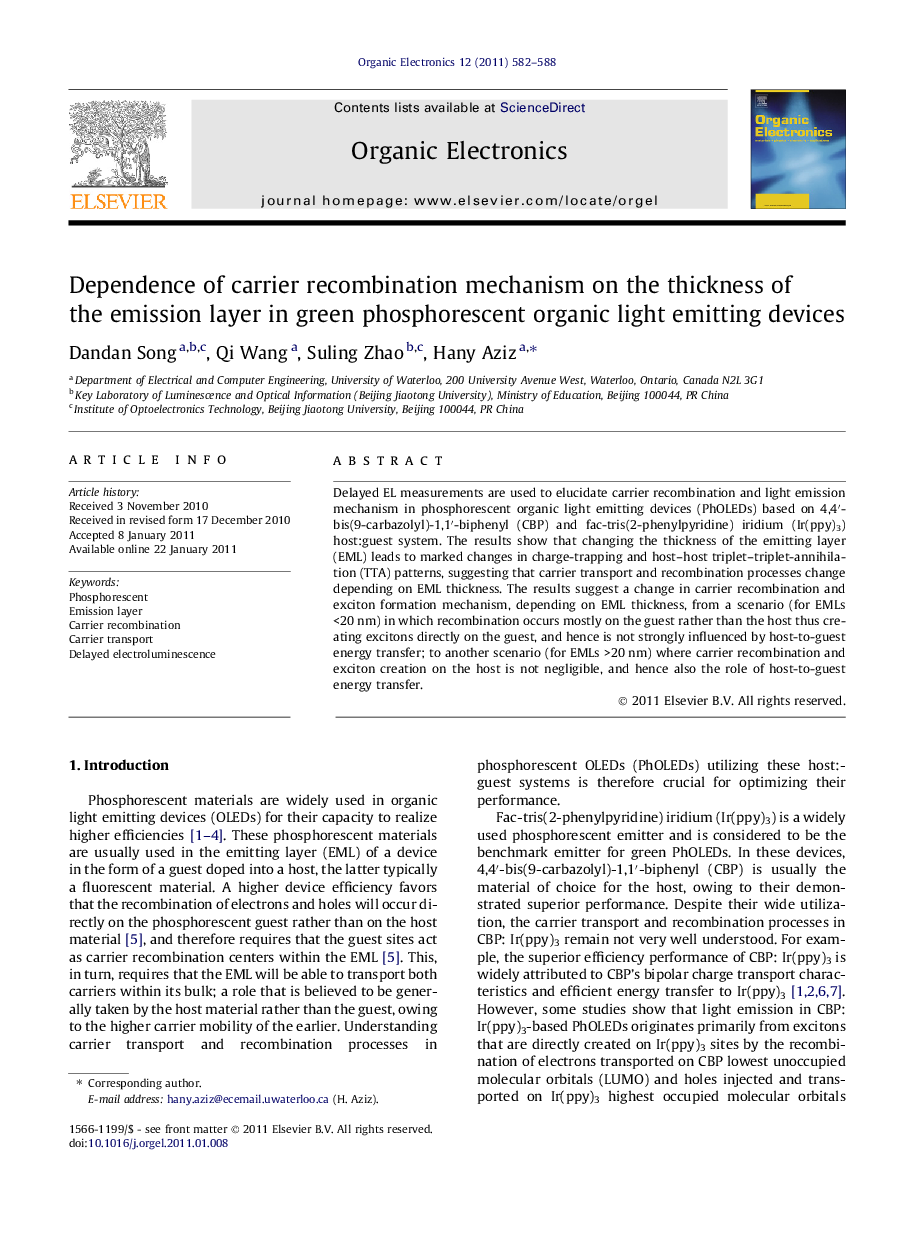| Article ID | Journal | Published Year | Pages | File Type |
|---|---|---|---|---|
| 1265429 | Organic Electronics | 2011 | 7 Pages |
Delayed EL measurements are used to elucidate carrier recombination and light emission mechanism in phosphorescent organic light emitting devices (PhOLEDs) based on 4,4′-bis(9-carbazolyl)-1,1′-biphenyl (CBP) and fac-tris(2-phenylpyridine) iridium (Ir(ppy)3) host:guest system. The results show that changing the thickness of the emitting layer (EML) leads to marked changes in charge-trapping and host–host triplet–triplet-annihilation (TTA) patterns, suggesting that carrier transport and recombination processes change depending on EML thickness. The results suggest a change in carrier recombination and exciton formation mechanism, depending on EML thickness, from a scenario (for EMLs <20 nm) in which recombination occurs mostly on the guest rather than the host thus creating excitons directly on the guest, and hence is not strongly influenced by host-to-guest energy transfer; to another scenario (for EMLs >20 nm) where carrier recombination and exciton creation on the host is not negligible, and hence also the role of host-to-guest energy transfer.
Graphical abstractFigure optionsDownload full-size imageDownload as PowerPoint slideResearch highlights► Changes in EML thickness lead to marked changes in charge-trapping and TTA patterns. ► A carrier transport and recombination model is established. ► Carrier recombination and exciton formation mechanism depend on EML thickness. ► Carrier recombination on host and host–host TTA are not negligible in thicker EML.
